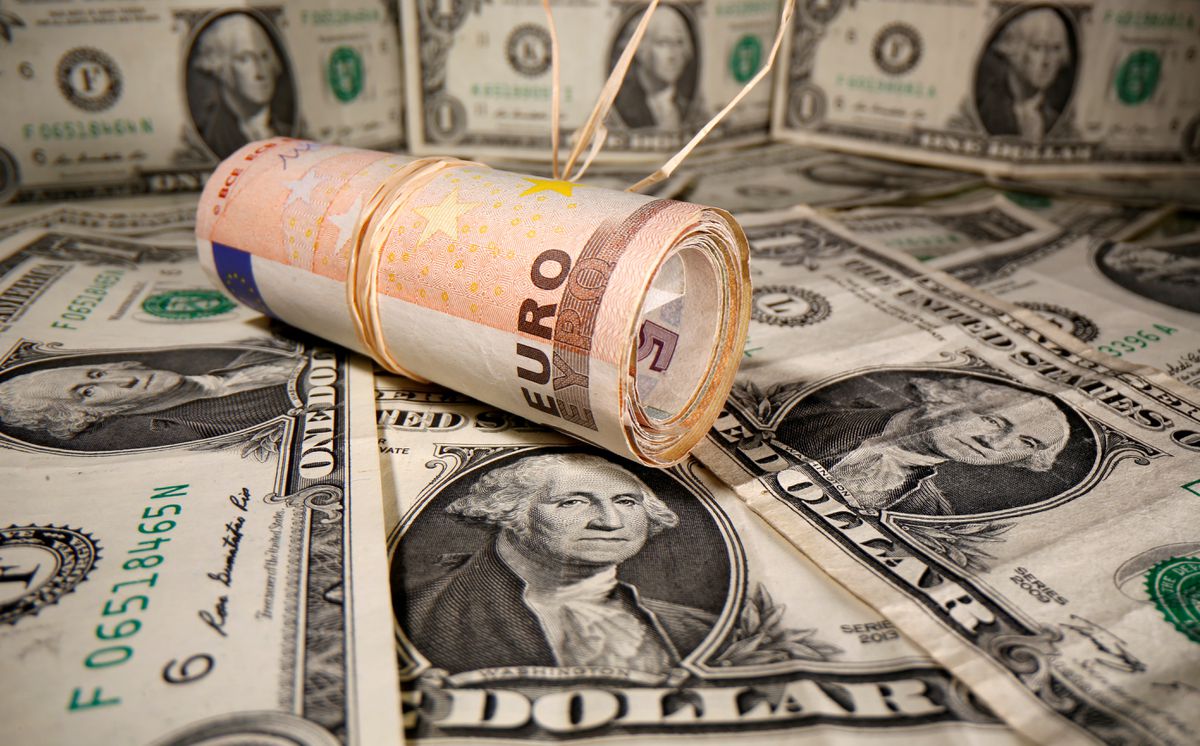Forex
Dollar is getting weaker against Euro, Yen and Pound

The dollar is getting weaker. The ICE-calculated index showing the dollar’s dynamics against six currencies (euro, Swiss franc, yen, Canadian dollar, pound sterling and Swedish krona) is losing 0.12% during trading, while the broader WSJ Dollar Index is losing 0.21%.
There is no need to say that the dollar is going to crash. The EUR/USD was trading at $1.0625, compared to $1.0586 at the close of the previous session. The pound rose to $1.2182 against $1.2148 at the close of trading on Friday.
Traders continue to follow the statements of the Federal Reserve System representatives and wait for the next statistical data on the American economy.
This week, the U.S. Department of Commerce will publish final data on the country’s GDP dynamics in the third quarter. Experts polled by Trading Economics do not expect to revise their estimate of GDP growth from the previously announced 2.9%.
Federal Reserve Bank of New York (FRB) President John Williams told Bloomberg on Friday that the U.S. central bank will raise rates as high as needed to bring “stubbornly high” inflation under control. San Francisco Fed President Mary Daley still believes that the Fed is far from meeting its goal of significantly lowering the rate of inflation in the United States.
The yen rose on Monday on a report from Kyodo that the Japanese government and the country’s central bank may revise its approach to the inflation target, making it more flexible. Japanese authorities are currently aiming for 2 percent inflation “as soon as possible.” A more flexible wording of the inflation target would pave the way for Japan’s central bank to tighten monetary policy, notes Bloomberg.
The Bank of Japan will hold a two-day meeting on December 19-20 to decide on key parameters of its policy soon. Exchange rate of the dollar against Japanese national currency fell to 136.03 yen against 136.60 yen at market close on Friday.
Earlier we reported that the EU Council disclosed some details about the gas market correction mechanism.

 Forex3 years ago
Forex3 years agoForex Today: the dollar is gaining strength amid gloomy sentiment at the start of the Fed’s week

 Forex3 years ago
Forex3 years agoUnbiased review of Pocket Option broker

 Forex3 years ago
Forex3 years agoDollar to pound sterling exchange rate today: Pound plummeted to its lowest since 1985

 Forex3 years ago
Forex3 years agoHow is the Australian dollar doing today?

 Cryptocurrency3 years ago
Cryptocurrency3 years agoWhat happened in the crypto market – current events today

 World3 years ago
World3 years agoWhy are modern video games an art form?

 Commodities3 years ago
Commodities3 years agoCopper continues to fall in price on expectations of lower demand in China

 Economy3 years ago
Economy3 years agoCrude oil tankers double in price due to EU anti-Russian sanctions

























